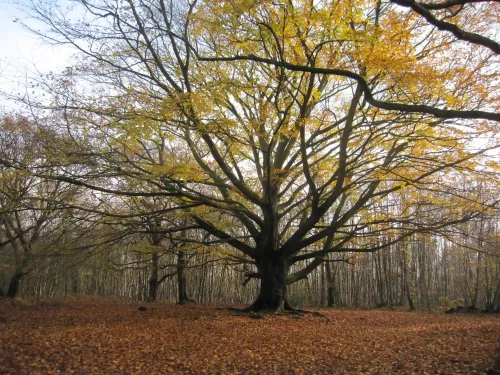
What would life be like without our woodlands?
Natasha Ruskin explores something terrifying: a world without woodlands.

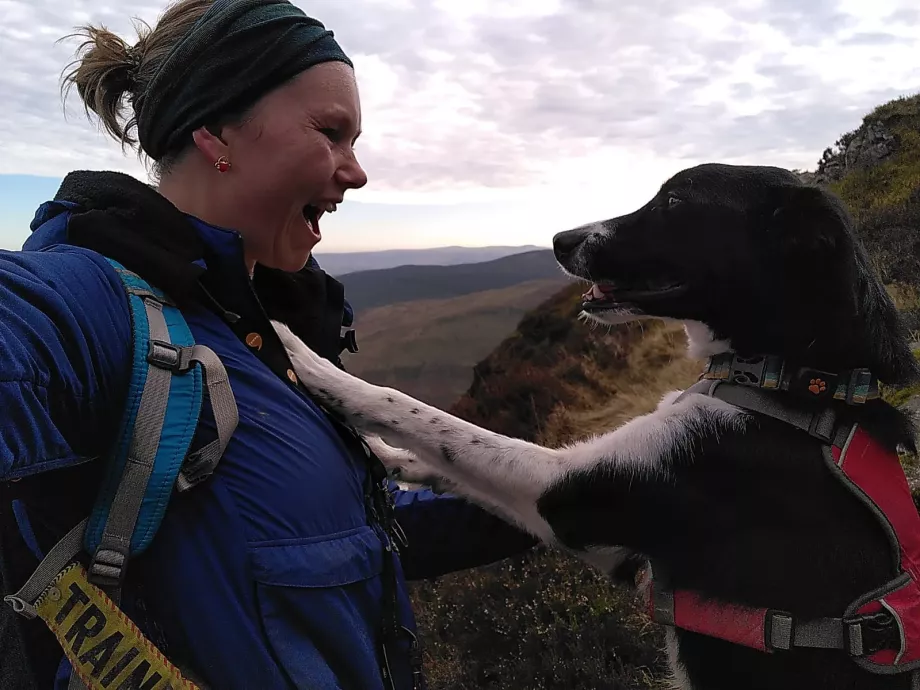
Sarah-Kay and Lily
My name is Sarah-Kay and I’m the mid-Wales red squirrel officer with The Wildlife Trust of South and West Wales. I currently have one dog, Lily (aka Boggles), a rescue collie. Lily is one of those clever collies who can learn anything, except how to chill. She is very nervous of other dogs, and also thinks that meadow pipits are REALLY exciting. I keep her on lead almost all the time for both these reasons. I don’t want to risk her running up to another nervous dog and causing them stress, nor her disturbing wildlife while she frolics around barking at the meadow pipits!
One great tool I’ve found for giving her the exercise she needs is Canicross – basically cross-country running with your dog on a harness! Lily gets to run, I get some exercise too, and she can help pull me along when I’m flagging.
Dog poo is another big issue for nature. One of my most-used Christmas presents ever is the Ruffwear pack-out bag (other brands are available!). This is a waterproof, scent-proof pouch that goes with me everywhere. It means I can pick up her poo and take it home with me, or to the next bin, even if that isn’t for many miles. I try to be a responsible dog owner, and that means caring for her as best I can, without compromising the welfare of wildlife, other people, or dogs.
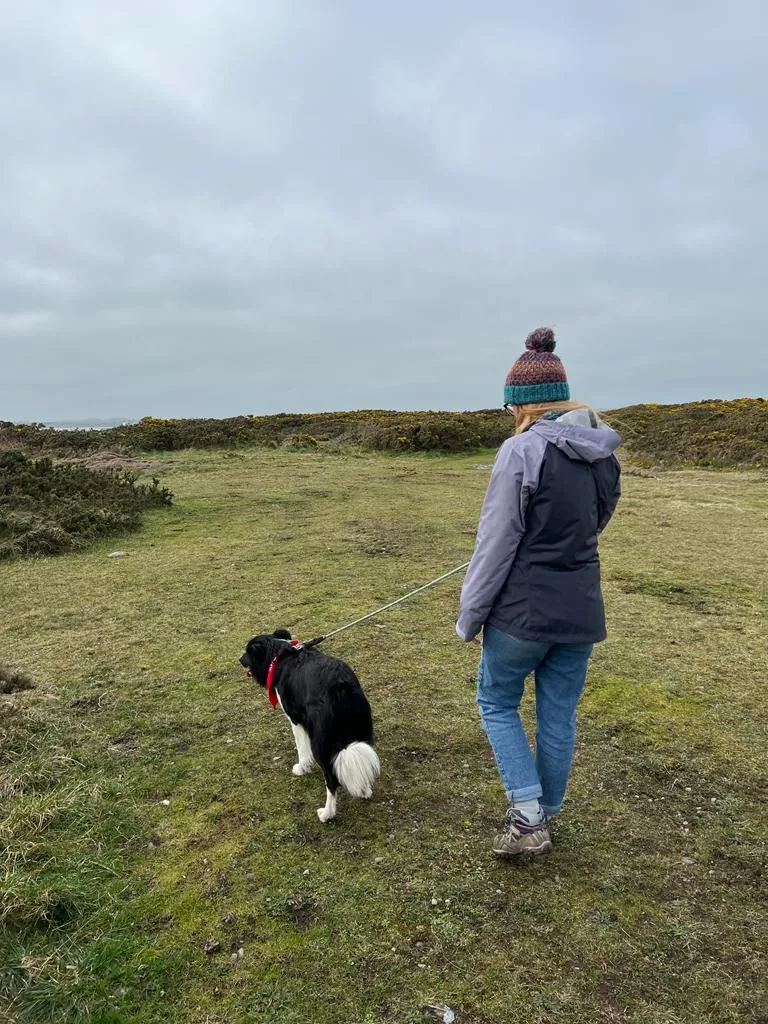
Katy from Ulster Wildlife walks her rescue collie Vinnie. Vinnie is on a lead.. Katy and Vinnie
I’m Katy, senior conservation officer for Ulster Wildlife. I manage species projects across Northern Ireland, including barn owls, red squirrels, and hedgehogs. I have a handsome rescue collie called Vinnie (or Vincent when he’s in trouble) and we love exploring nature together.
I feel very strongly about responsible dog ownership and feel we all have a part to play in minimising wildlife disturbance. I am lucky enough to live on the coast and often see owners allowing their dogs to chase waders and seabirds on the beach. Chasing birds may not seem like a big deal but if this is happening to those birds 50 times a day it becomes a real problem as it stops them from resting and feeding, both vital for their survival. Your dog may never actually catch anything but imagine being a tiny seabird and having to escape for your life every time a dog comes charging along. They see that dog as a predator and respond appropriately. That is why Vinnie is always on a lead when wildlife is around!
Another thing that Vinnie and I always take notice of are ‘keep your dog on a lead’ signs. These are not there to ruin your dog’s fun and always have a reason behind them. I often work on a site where there are red squirrels and recently a dog caught and killed one. This is devastating when we are working so hard to save this species. So, if you see these signs, please know they are there for a reason – it might be a rare species is present, such as a plant that needs protection from trampling or a ground-nesting bird is breeding.
Next time you are out and about with your companion, think about what impact you might be having on the landscape around you and how you can both enjoy nature responsibly. We are a nation of both dog lovers and nature lovers after all.
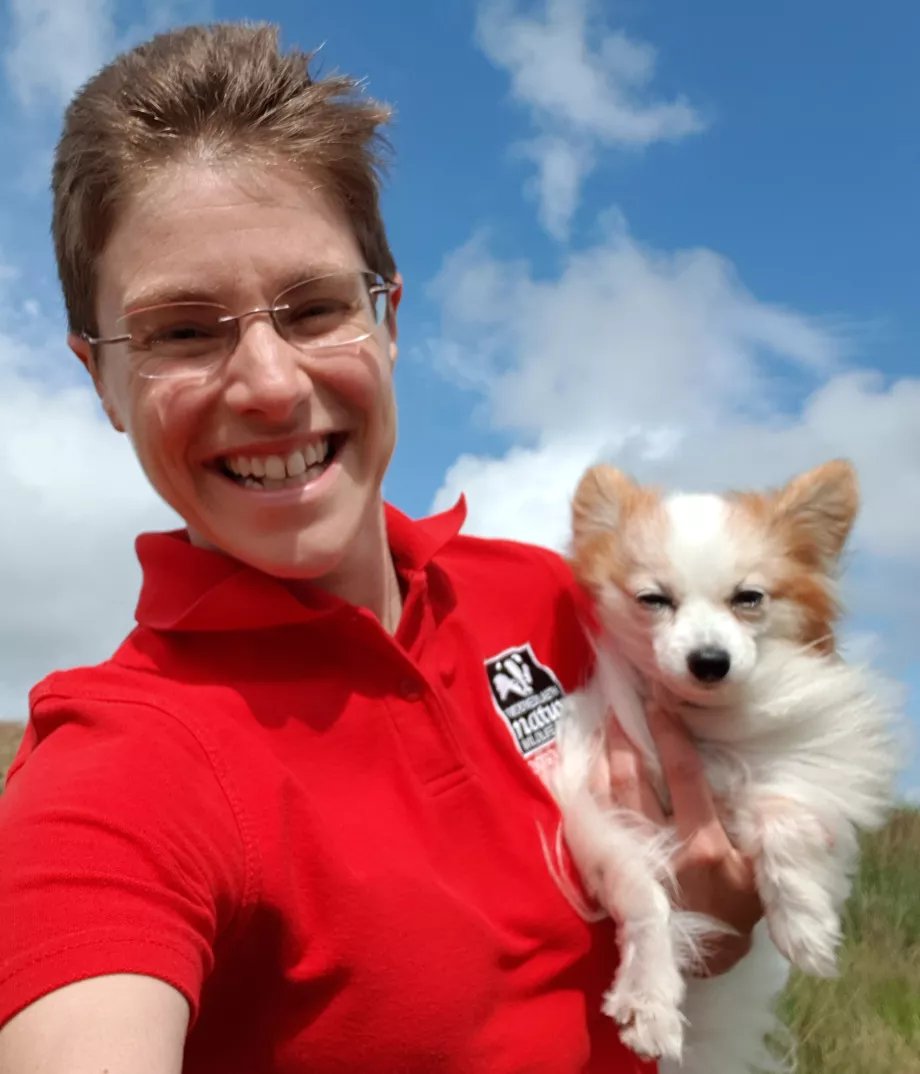
Tammy and Cerrig
My name is Tammy and I’m the conservation officer for Montgomeryshire Wildlife Trust. I am also a big dog lover and have had the papillon (butterfly dog) breed in my life for over 30 years. Currently, I share my life with two lovely boys: Cerrig, who is nearly 12 years old, and Ziggy, who is seven. They have a combined weight of just five kilos!
Like all who work in the profession, being a conservationist isn’t just about the day job; we live and breathe it. So, it should go without saying that I do all I can to minimise the impacts my dogs have on the natural world.
One issue that’s often overlooked is the chemicals used on pets. Flea and tick treatments can contain chemicals so harmful to bees and other insects that they’re (mostly) banned from use on farmland but can still be found in pet treatments. I do not routinely treat my dogs with chemicals at all. Initially this decision was for my dogs’ welfare, but the more I have learnt about the impacts of these chemicals, the more I am glad that I don’t.
As well as using herbal preventatives on their fur and giving them garlic regularly, I take the evidence-based approach, manually checking Cerrig and Ziggy when they are groomed (on a white sheet, so I can see any flea dirt). I am fortunate to live in an area where ticks are less prevalent – the odd one is removed with a tick twister – but I have found in the past that chemical treatments don’t really prevent their attachment anyway. I also test their poo for worms and, as these tests have found none, they haven’t been wormed for years.
You can read more about pesticides found in flea treatments in this report on a study by The Wildlife Trusts’ ambassador Dave Goulson and colleagues.
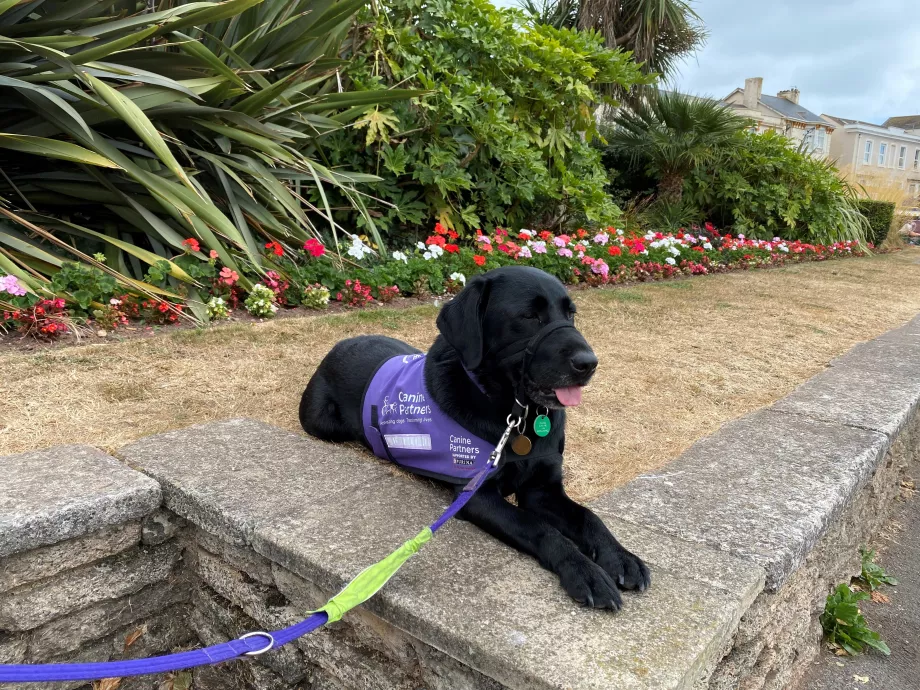
Laurel
I’m Miriam, the strategic lead for equality, diversity and inclusion at The Wildlife Trusts and I have a registered assistance dog (Canine Partner) called Laurel. As you can imagine, Laurel goes everywhere with me, including out on nature reserves when I visit them in a work capacity and recreationally. It is exceptionally important for me to make sure she doesn’t have any negative impact on these sites. Laurel is always kept on her lead in reserves, whether we are working and she is ‘on duty’, or whether she is having some ‘dog time’ between meetings. She is also very privileged to be allowed on sites that don’t allow dogs. As with all nature reserves she is kept on a lead at all times and we keep to main pathways to try not to disturb any wildlife.
The vetting process for having a Canine Partner (as with most assistance dogs) is strict and one of the musts is being able to clean up after your dog. There are various aids and adaptions that can allow disabled people to be able to poo pick, so there really is no excuse not to clean up after your dog. The dogs must also have excellent recall and are trained to return on the whistle.
There is a balance to be found between engaging with nature and being a dog owner. Dogs off lead can cause issues not only for wildlife and the environment but also for those who aren’t confident around dogs, and those with assistance dogs. There is nothing more worrying than an off-lead dog bounding up to your on-lead assistance dog and getting aggressive. If Laurel gets hurt by another dog, I lose my assistance and independence until she is recovered.

Natasha Ruskin explores something terrifying: a world without woodlands.
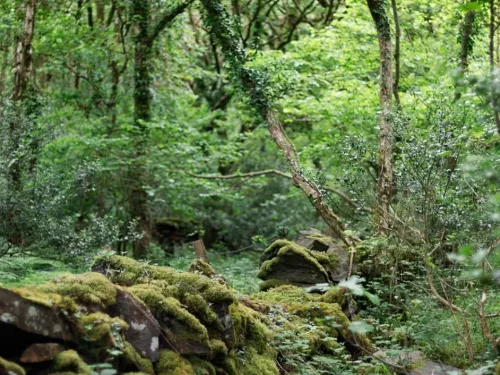
This guest blog from Flora Hastings, Nature Immersion Workshop Leader, explores outdoors, immersive workshops that use the body and conversation to unravel the connections we have to the environment around us.
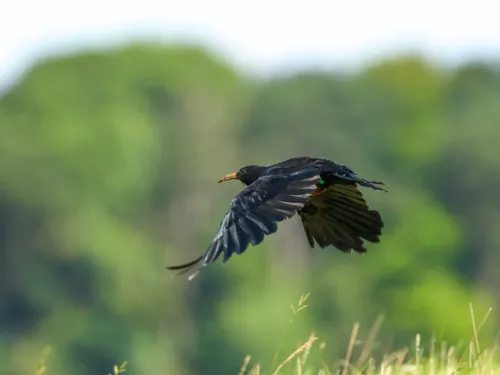
If you're a wildlife enthusiast that wants to get started with photographing what you see, it's important to get the basics down so you can make the most of those precious trips. Kent Wildlife Trust's Content Creator, Tim Horton, talks through his…